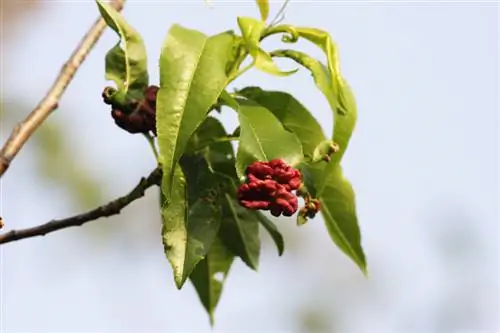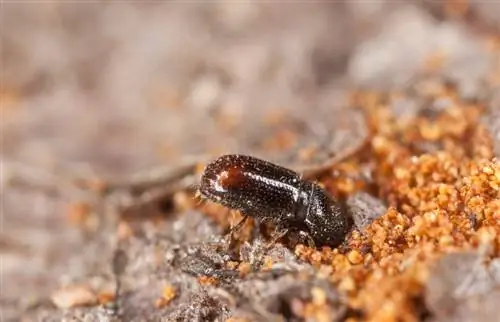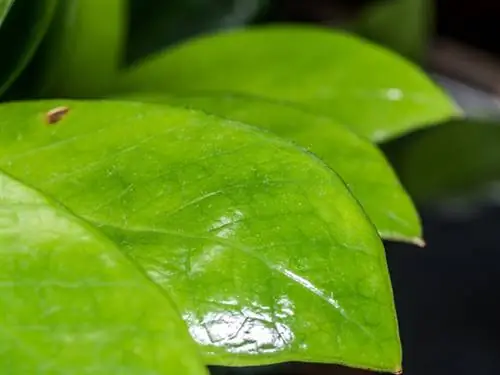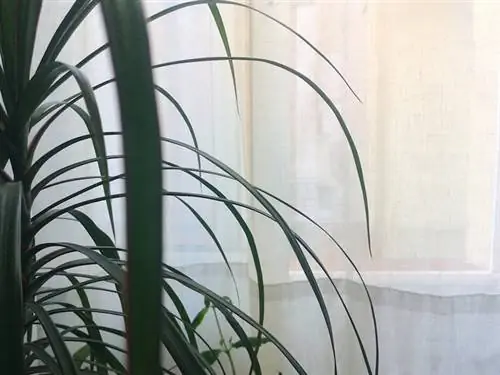- Author admin [email protected].
- Public 2023-12-16 16:46.
- Last modified 2025-01-23 11:19.
Peach trees, especially when they grow in less optimal locations, are quite sensitive to pest infestation and many fungal diseases. Read about what diseases there are, how to recognize and treat them.
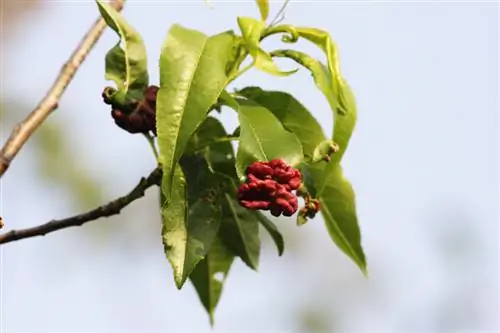
What diseases and pests affect peach trees?
Peach trees can be affected by various diseases such as curl disease, shotgun disease, peach powdery mildew, shoot tip drought, monilia fruit rot and peach scab. Pests such as aphids, fruit tree spider mites and the scale insect can also cause problems. Prevention and timely treatment are crucial to keep the tree he althy.
Fungal diseases
Fungi can basically colonize all parts of a tree and damage it so badly that it dies with repeated infestation. For many fungal diseases, only chemical treatment actually helps, especially with the very common curly disease. However, the best remedy is prevention: choosing the right location, regular pruning of the tree and moderate fertilization (in particular sufficient but not excessive nitrogen!).
Frizz disease
The leaves in particular show blistered swellings ranging from white-green to red in color and are ultimately thrown off. The only effective remedy is a spray before the buds open. There are currently two products approved for hobby use (€19.00 on Amazon).
Shotgun disease
Small, reddish spots appear on the leaves, which later fall out. The leaves look like they have holes in them. Bark and fruits can also be affected. Treatment is necessary if the disease is severe; suitable fungicides are sprayed when the disease sprouts. Infected areas should also be removed. To prevent this, treetops should be kept as light as possible.
Peach mildew
Mildew is caused by the fungus Podosphaera pannosa, which spreads particularly in summer temperatures and high humidity. The fungus causes white coating on shoots, leaves and fruits and also causes them to deform. If the infestation is small, cutting out is sufficient; if the infestation is severe, fungicides must be sprayed.
Shoot tip drought
Shoot tip drought is also known as branch monilia. It occurs during the flowering period, especially in rainy weather. Suddenly the flowers wilt and dry up, and shoots and leaves also die. As a preventative measure, pruning should be carried out annually after the harvest. If affected shoots occur, they should be cut back immediately to 10 centimeters into the he althy wood. If the infestation is severe, you can spray directly into the flowers with an organic fungicide (safe for bees).
Monilia fruit rot
The Monilia fungus attacks all types of pome and stone fruit, including peaches. They initially have small rotten spots that quickly enlarge. Ring-shaped, grey-brown colored fruiting bodies of the fungus (so-called cushion mold) develop around these. The disease is spread particularly by wasps during fruit ripening. Combat: Removing the affected fruits, even in winter.
Peach scab
Scab occurs on all types of pome and stone fruit and primarily affects leaves and fruits. Dark spots form here and harden quickly. In case of scab infestation or to prevent it, spray with an organic fungicidal agent before and after flowering.
Pest Infestation
Aphids
An aphid infestation is manifested by stunted and curled leaves and compressed shoots. The treatment is carried out with a chemical insecticide or biologically with beneficial insects such as: B. Lacewings. However, such treatment is not possible outdoors; the peach tree would have to be wrapped in foil beforehand.
Fruit tree spider mite
When infested with spider mites, small, whitish spots appear on the leaves, and the leaves are also colored lead-grey to bronze. If you look closely, the mites themselves can be seen as very small, reddish colored animals. The eggs, which are also reddish, are laid in winter. Spider mites suck the sap out of the plant and damage it.
Common scale insect
A scale insect infestation can be recognized by (severely) weakened plant growth, and there is often a black coating on leaves and bark (soot mold). The scale insects themselves are often visible as a black coating on leaves and bark. The treatment is similar to that of the olive tree.
Tips & Tricks
According to the “Regulation on Plant Protection Products that are Harmful to Bees”, it is forbidden to treat flowering plants with products that are harmful to bees. The packaging of pesticides that are harmful to bees contains the message “Caution! Dangerous for bees!”.

